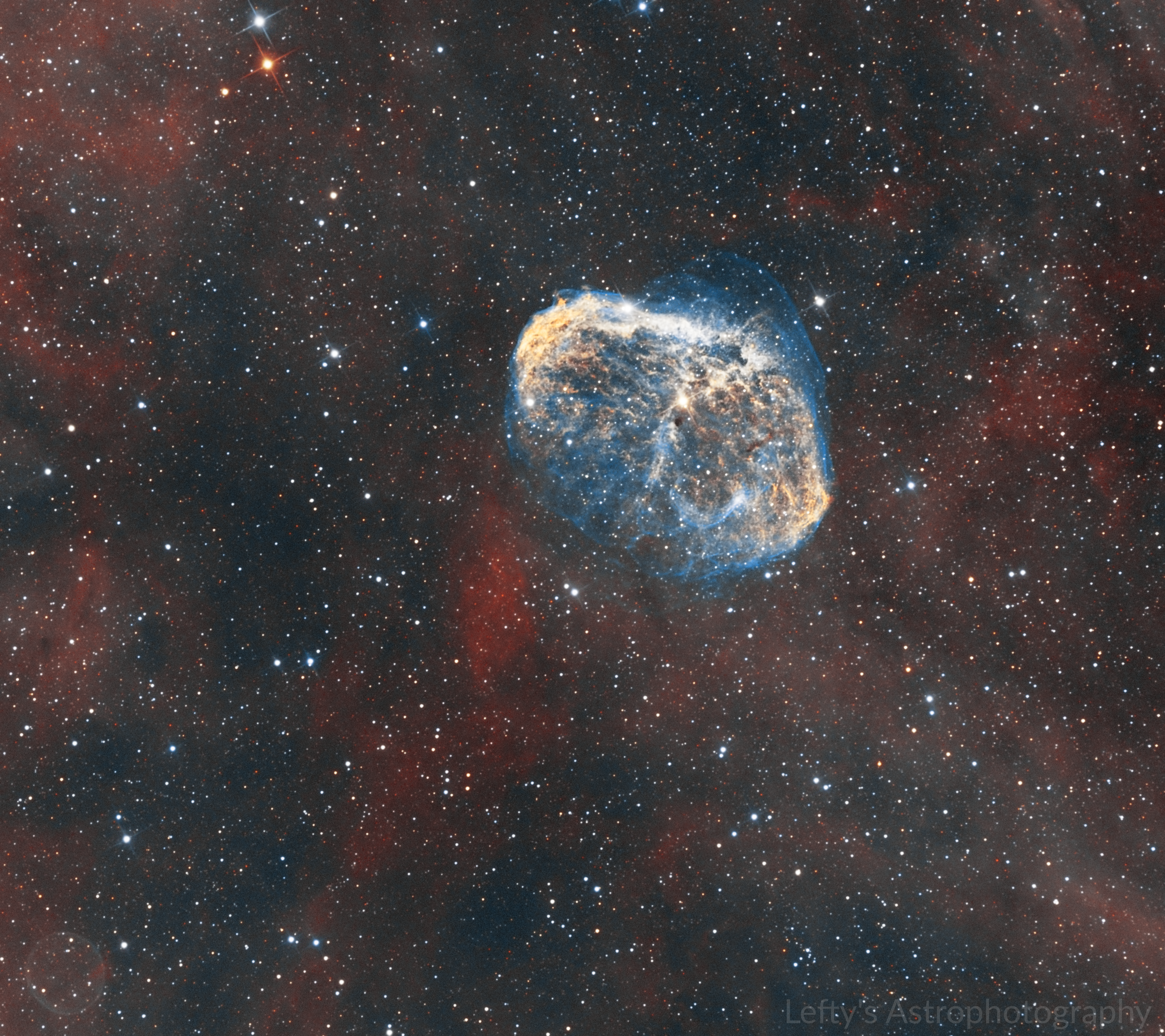Submitted by azzkicker7283 t3_y5qtly in space
Comments
Gizmooo111 t1_isl9b8c wrote
Wow this looks amazing. Great work
I shoot it last week but.... Not comparable to yours. I was about to post it but, nope this would be humiliating for me. :D
i have very much to learn to get those pictures
viomoo t1_isldidw wrote
Try not to compare your shots to others! Only try to improve yourself!
The shot is nice, but if you can image this nebula you are ahead of 99.9% of the people who will never see it for themselves!
TheOldMancunian t1_islhvkx wrote
This is amazing. You should enter this for next year Astro photo of the year. It’s seriously good
azzkicker7283 OP t1_isli6gp wrote
I'll probably send it to the APOD folks at some point
[deleted] t1_isljstf wrote
[removed]
[deleted] t1_isnqi5h wrote
[removed]
TheCircusisfalling t1_iso1pxu wrote
Absolutely stunning picture.. who seriously this should be called "The Space Brain".
EnlightenedTom t1_iso7i4x wrote
The universe is truly a fascinating place. Makes me incredibly sad about being born in the early stage of space exploration.
United-Handle5202 t1_ispv9kd wrote
Space is just breathtaking and full of mystery!
Alternative_Donut105 t1_ist7gyn wrote
What makes the colours?? Is it different gases or are they added to the picture by man
azzkicker7283 OP t1_istirxh wrote
the red is hydrogen gas, and the blue is oxygen. This image is false color, but the HOO palette I used is fairly close to true color, since the hydrogen-alpha emission is in the red part of the spectrum, and oxygen-iii is teal
Alternative_Donut105 t1_istt1e9 wrote
Wow wasn’t expecting a NASA level response 😂😂😂😂 I love learning about space 👍🏻 thank you
Alternative_Donut105 t1_isttaug wrote
If there is that much hydrogen and oxygen in space what do scientists think is stopping it catching fire?
azzkicker7283 OP t1_istvps5 wrote
because even though there's some ionized gas floating around it's still pretty much a vacuum
Fredwharezdabread t1_it0nf2s wrote
Looks like a giant floating brain in space. Cool photo

azzkicker7283 OP t1_isl6lyo wrote
Apparently it's called the crescent nebula because that's what it looks like through a visual telescope. I think it looks more like a scrotum ¯\_(ツ)_/¯
This is my third time shooting the Crescent Nebula! I had first shot it back in 2017 when I still used a DSLR for astrophotography. I still use the same scope, but eventually upgraded to a monochrome astro cam, and this was my first target using Hydrogen alpha + Oxygen-iii narrowband filters in 2019. This year I decided to shoot it again, although I combined this years data with the data from 2019 since my setup then was identical to how it is now. I did have to heavily crop in on this image due to differing camera rotations, but I ended up with a higher signal to noise ratio overall by combining the data. I also made a starless version of this pic which better shows off the faint nebulosity, including the Soap Bubble Nebula in the bottom left.
Captured over 5 nights in May 2019 (Bortle 7) and 4 nights in May 2022 (Bortle 6)
Places where I host my other images:
Instagram | Flickr
Equipment:
TPO 6" F/4 Imaging Newtonian
Orion Sirius EQ-G
ZWO ASI1600MM-Pro
Skywatcher Quattro Coma Corrector
ZWO EFW 8x1.25"/31mm
Astronomik LRGB+CLS Filters- 31mm
Astrodon 31mm Ha 5nm, Oiii 3nm, Sii 5nm
Agena 50mm Deluxe Straight-Through Guide Scope
ZWO ASI-120mc for guiding
Moonlite Autofocuser
Acquisition: 26 hours 5 minutes (Camera at Unity Gain, -15°C)
Ha - 61x360" + 88x300"
Oiii - 54x360" + 87x300"
Darks- 30
Flats- 30 per filter
Capture Software:
PixInsight Processing:
BatchPreProcessing
SubframeSelector
StarAlignment
Blink
ImageIntegration
DrizzleIntegration (2x, Var β=1.5)
DynamicCrop
DynamicBackgroundExtraction
EZ Decon
NoiseXTerminator
STF applied via HT to bring each image nonlinear
Combining Channels:
> really like how the colors turned out on this, especially the slight gold/yellow in the nebula compared to the red in the background
> R= Ha
> G= ((Oiii*Ha)^~(Oiii*Ha))*Ha + ~((Oiii*Ha)^~(Oiii*Ha))*Oiii
> B= Oiii
Nonlinear:
LRGBCombination with extracted L as luminance, used for chrominance noise reduction
Shitloads of CurveTransformations to adjust lightness, saturation, contrast, hues, etc. with various masks
NoiseXTerminator
More Curves
EZ star reduction
NoiseGenerator to add noise into reduced star areas
Even more curves
ColorSaturation to better bring out the Oiii regions
More NoiseX
Resample to 80%
Annotation